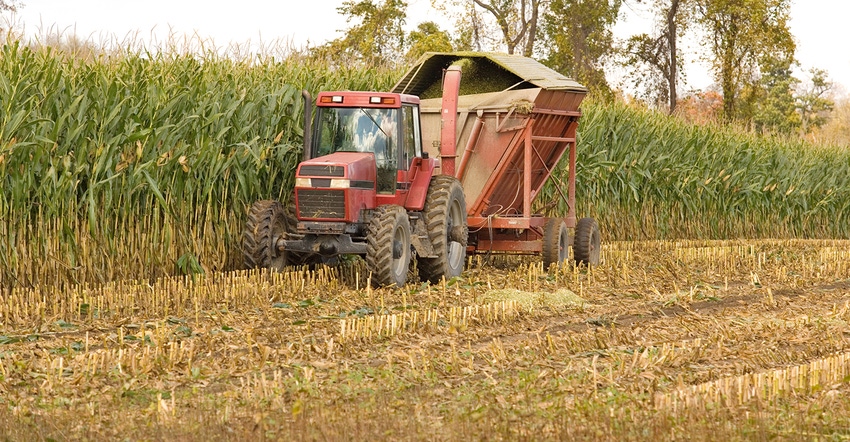
Shrink. It is one of those problems farmers wrestle with, once the silage is in storage. However, Caley Heiman says focusing on silage management at harvest can help reduce shrink.
Silage shrink in dairy operations can range from 15% to 25%, says the Alltech regional sales manager. "This level of shrink can equate to a loss of 15 to 25 cents for every dollar invested in putting the silage up," Heiman says.
Shrink happens
The largest amount of shrink and reduction in quality seems to occur at the top of the silage pile, says Heiman. This area typically is not packed tight enough. It's also exposed to the most oxygen. The combination allows oxygen to penetrate the silage easily, creating an environment for molds and yeast. The end result — spoilage.
"Generally, top spoilage represents about one-third of what was once good silage," he explains. "For example, 4 inches of top spoilage was originally 12 inches or 1 foot of quality silage." Heiman says that farmers should not feed this spoiled silage, as it can cause health and production problems in cows. This area should be the main focus of management, however, according to Heiman.
Management works
Here are Heiman's four tips to help reduce silage shrink:
1. Pack tight. Silage packing density should be 15 pounds DM/foot³ or more. Typically, one pack tractor to one harvester will achieve 15 pounds DM/foot³.
2. Plan before packing. Design piles to allow for more packing on the side or shoulder of the pile.
3. Protect the product. Use a temporary cover overnight or in between any breaks in silage harvest. Use a mold inhibitor on the silage surface prior to covering. Cover the pile as quickly as possible once harvest is complete.
4. Keep oxygen out. Seal plastic edges and seams with gravel bags or dirt to prevent airflow under the plastic. Only unseal what you need for the day to limit the oxygen exposure of the silage.
Heiman says these steps will help improve the quality of silage. Higher-quality silage with lower shrink will benefit your bottom line, he says.
"Given that silage is a major component of the cow's diet and impacts the types and amounts of other ingredients in the diet, taking steps to improve silage management practices and specifically focusing on reducing top spoilage can have a big impact on reducing silage shrink and improving quality," Heiman adds. "There is a lot of money invested in putting up silage, so it is crucial to make sure that it is put up correctly to minimize shrink, retain nutrients and ultimately preserve that investment."
About the Author(s)
You May Also Like






